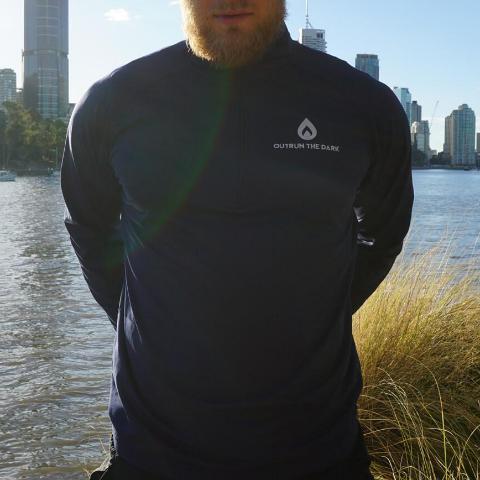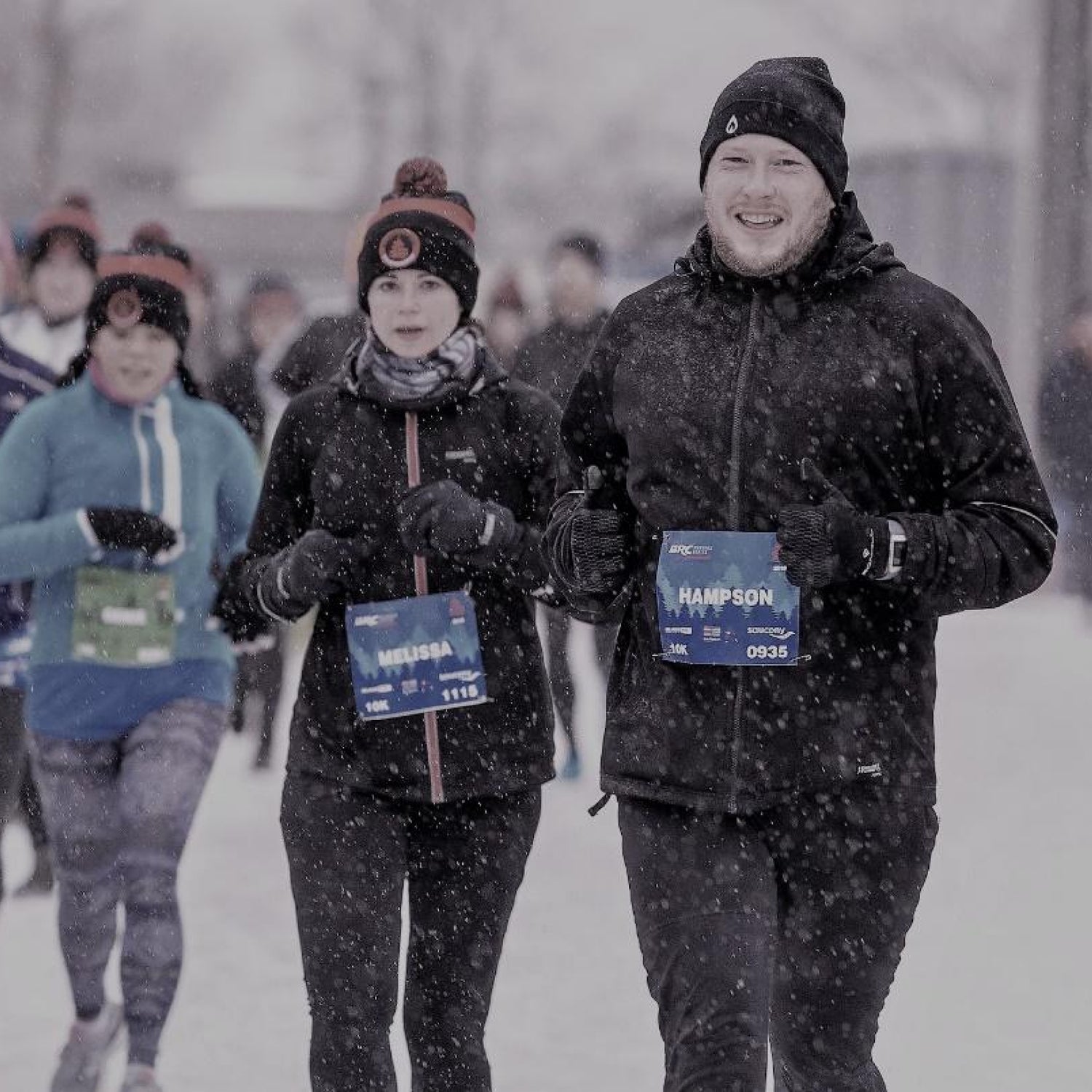
It’s that time of the year again, the days are getting shorter, and the mercury is sent plummeting into the negatives. This will be my third winter running season and I’ve benefited greatly from having those extra three to four months of strength training, conditioning, and additional kilometres under my belt before I hit my first race in March 2020.
It’s all about preparation and dressing according to the weather conditions outside. As I’ve been told by a number of wise people growing up:
When you fail to plan, plan to fail.
If you wait for perfect conditions every time you run, you won’t get much running done outside (unless you actually enjoy the treadmill). For me, I need to run outside - be it working from home, the office, or just staying in, I get cabin fever and need to step outside even for just fifteen minutes, feel the air and sun on my face and immediately feel much better.
It’s cold, snowy, windy, and dark outside. Not the best of conditions for running, but if you follow these handy tips below, you’ll own winter training and be months ahead of the pack when it comes to spring running season.

Enjoying a Winter Run at -25C (-13F)
It’s All About Layers
One thing I learnt very quickly when I first moved to Canada was to think of layers. To survive the winters without running required planning and layers. Think of it this way — if you get too hot, you can always take off a layer. It also means, if you get cold, you can put one back on.
The same principle works for running or any activity outside. One key rule to determine your layers is the common “Ten Degree Rule.” The rule states that you should dress as if it is 10 degrees warmer than what the thermometer says. So if, for example, the mercury is sitting at -5°C (23°F), you should typically consider wearing apparel more suited for +5°C (41°F). The reason is pretty simple. While running, we generate heat and if you’re wearing layers, you’ll only get hotter. You wouldn’t wear a sweater in the middle of summer now, would you?
So how do I prepare for a run based on temperature? To answer this, let’s discuss what is recommended at different temperature ranges, starting from warmest to the coldest to get you through those winter months.
Between 5 °C - 10 °C (41°F - 50°F)
For those who are clinging on to the last breaths of the fall months, we can be hopeful for a few of these days before the year is out (at least up here in Canada). This is a grey area for a lot of runners and I’ll take myself and my partner as an example here. At 10°C, I would still consider shorts as an option and a short-sleeved shirt.
For me, it would still be feeling like 20°C and pants are just not for me when running that hot. The complete opposite can be said about my partner. As soon as the temperature drops below 20°C, she is already in Capri pants with a long-sleeved mid-layer. The closer we get to 5 °C, I would probably trade in the shorts for pants and we’d both have a warmer sweater or jacket to run in.

For cooler runs, running pants, as well as a long-sleeved shirt or jacket, would suffice.

For those in the warmer climates, Leggings or Capris like the Outrun Shapes Capris can be enough.
Between 4°C and -5°C (40°F - 23°F)
Starting with our base layer we’re looking at dusting off the long-sleeved shirts and running pants. For the guys, it might be wise investing in some windbreaker style pants especially around the groin area or wear a pair of shorts over top to add an additional insulating layer.
As well as a long-sleeved shirt, I opt for a mid-layered sweater with some thermal properties. I have two great go-to options that I can rotate around between runs. Both are zipped sweaters which are thin enough to be worn out above freezing temperatures, but also have thermal properties when we drop into sub-zero temperatures.

The colder the temperatures get, the more likely we would need to include accessories for our outer extremities. Gloves, hats, ear-muffs, and neck warmers are things to consider when the wind picks up and the temperature drops. Your hands, ears, and face will feel the cold even more without adequate protection from the elements.
Below -5°C (23°F)
Now we’re starting to get pretty cold and at the highest risk of skipping a run when the temperature drops even further. Wind chills which will make it feel colder than it is will also have an impact on the running clothes you wear.
My first Winter shopping spree involved getting kitted out to run in anything up to -30°C (-22°F) and it felt a little over the top in October/November, but I’m glad I did it then.
The base layer consisted of a merino wool long-sleeved shirt with a technical moisture-wicking short-sleeved shirt on top. This was topped off with a thermal jacket with a hood and built-in balaclava. This outer layer should be wind-resistant which also helps keep the heat in. Should your jacket not have a hood, you can always opt for a winter hat to cover the top of your head and ears.

For pants, fleece-lined is the way to go, while inside or if you’re traveling to a run, it will feel much too warm but once you’re in the elements, it’ll be the best thing from keeping your legs from being exposed to the chills. Thicker socks would be a good idea too especially if your running shoes are not GORE-TEX shoes which are waterproof and warmer as a result.
Traction Aids are also available in most running stores if you don’t feel like investing money in a pair of shoes that you’ll wear for one season only. These aids typically fasten around your shoes and will give you that extra grip when needed.
Thermal gloves are needed and if you have wind protectors on them, while you may not be able to operate your phone for that perfect running in the snow selfie, your hands will be nice, snug and warm. Once the weather drops to below -20°C (-4°F), I would opt for more mitten style gloves, which are much thicker.
Night Time Runs
With winter comes darkness. The days are shorter and it's typically night time when we get home from work. We still want to get our runs in and while we’re prepared for the cooler temperatures, we still have other issues to deal with; being seen.

Photo by Eugene Triguba on Unsplash
Running in the wintertime has led me to run on the roads instead of the sidewalks as roads typically will have at least been plowed. Here in Toronto, while you’re supposed to plow your own bit of sidewalk, it isn’t guaranteed that it’s been done. A lot of road running, dark side roads, and trails. It’s smart to see where you’re putting your feet but also to be seen by other runners and vehicles.
“Be Safe, Be Seen.”
These were the words said to us before every night run while attending a 10k running clinic in Burlington, Ontario. The streets were long and dark and you needed to see where you were going, but also needed to be seen.
Headlights are one nifty thing to have that you can strap on and light the way ahead of you, and the same goes for armbands and leg bands that include LED lights that either stay on constantly or blink to catch attention.

NoxGear LED Vests
Sometimes a headlight and armbands are good to be seen from one angle and wearing reflective jackets, hi-vis vest, or even light vests such as the NoxGear Tracer 360 (pictured above) guarantees that you will be seen from all angles and from afar.
One Last Hurdle
Now that you‘re sorted with the appropriate apparel to survive any winter condition, the last hurdle you will face is your own mindset and discipline. It’s cold, dark, and in most cases miserable outside. If you have access to a treadmill, you might want to do that or focusing on strength training at a gym or home works. But you have everything ready to wear, all you need to do is lace up and out the door you go.
One thing that has helped me in the past has been to sign up for a late winter/early spring run. In March, I will be completing my second half-marathon. It’ll be cold, but I have to train for it.
Having a social group (such as our Outrunners Facebook group), running clinics, and/or running communities such as parkrun will help motivate you to get out there and run with a group of like-minded people. You don’t have to train on your own. But if you prefer your own company, that’s fine too.
Regardless of how you like to train, you’re now set to tackle the winter months, maintain your training, and own your next race.







Leave a comment
This site is protected by reCAPTCHA and the Google Privacy Policy and Terms of Service apply.